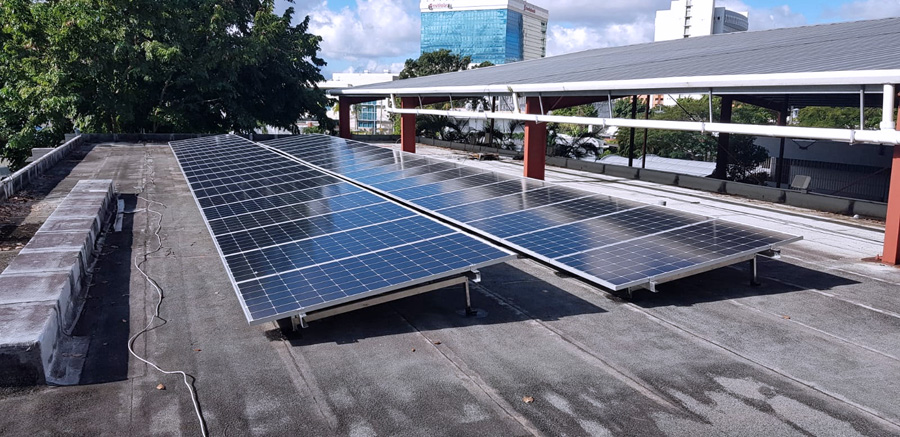Op-Ed: Solar offers critical path to escape Puerto Rico electricity system’s financial mess

Bondholders, fiscal and energy experts and political leaders have run into a singular truth in Puerto Rico. The critical path to escape its electrical system’s bankruptcy is budget savings generated by solar energy. Natural gas, fuel oil and diesel are expensive and volatile fuel sources for the system. Solar energy carries no fuel costs.
Since 2014, bondholders have sought an outcome that gave them 100% of the value of their bonds as part of any bankruptcy settlement. Moody’s, however, reported in 2017 that bondholders of the Puerto Rico Electrical Power Authority (PREPA) could expect recovery rates to be less than 35%. And over time, the bondholders have grudgingly acknowledged that the value of their holdings has eroded. The first plan (circa 2016) gave bondholders an approximate 85% recovery rate.
The plan was rejected. Then, they tried approximately 65%. This plan failed. Now, they are down to somewhere around 23%. This should be rejected also. The reasons for the rejection of the debt deals have become clearer over the past seven years.
The electricity system runs principally on fossil fuels, natural gas, heavy fuel oil and diesel. The fuels consume anywhere from 30% to 70% of the annual budget, a factor driven by the fluctuation in oil and gas markets. When natural gas and diesel oil are at their peak price — as was true recently during the invasion of Ukraine — the annual cost topped $2 billion, causing electricity rates to soar past 30 cents per kilowatt-hour (kWh), undermining Puerto Rico’s economy.
The bondholders came to realize that you cannot pay for expensive fossil fuels and more than $8 billion of old debt (now $10 billion according to the Federal Oversight Management Board) with an electrical system that hasn’t seen investment in decades.
And so, despite the expensive consultants proposing one untenable financial gyration after another that supports unaffordable debt service, the bondholders had to face facts: Their purported legally valid bond claims were not worth very much unless without reduced fuel costs.
And, even if the fuel costs were reduced, the customer base could not afford legacy debt service. The cost of rebuilding the antiquated system remains an outstanding issue even with $14 billion in promised federal aid.
The fiscal experts learned a few things, also. An electrical system that overcharges the public for unreliable electricity will rapidly lose customers. When the root of the overcharge and the gaping long-term structural deficit is an annual fuel bill that tops $2 billion, expect the customers to leave in droves. This fuel cost is part of an approximate $4 billion annual budget. The efficiency measures and labor budget initiatives proposed by the FOMB and PREPA are not enough to cover this gap. In fact, some of the budget actions to close the gap are economically counterproductive and may even introduce other dysfunctional elements to the island’s economic calculus.
For example, the fuel line lenders are owed some $700 million in back payments as part of the legacy indebtedness. The pension system is also in trouble. Under the latest proposal, the fuel lenders are likely to recoup about 80% of their outstanding invoices, and the pension system would remain without any long-term plan for solvency. Earlier this year, retirees received a letter telling them that the pension system was out of money and their monthly allotments might be interrupted. The economic paradox: The money to retirees would be spent in Puerto Rico; the fuel lender payments would not.
Energy experts have also learned a lesson. Earlier this year, it was reported that more than 2,500 households per month are installing solar panels in their homes. There is no subsidy, so only households that can afford to do so are electing this path. Given the lack of reliable energy and fluctuating prices, the customer base will choose solar energy if given the chance. It is projected that by 2040 almost 50% of the electricity on the Island will be supported by distributed generation.
This is not only a price issue related to household budgets. It is principally a choice made to maintain the life, health, and safety of families. Lesson learned: Run a system into bankruptcy with poor service, riddle it with decades of corruption, poor management and financial advice, and the most affluent customers will be the first to leave.
The bankruptcy process also revealed that fuel prices regularly push electricity rates in Puerto Rico above basic “share of wallet” standards used in the electricity industry. The price of electricity was too high for Puerto Rico’s residents—the poorest people in the United States. Additional legacy debt would make the situation worse.
Puerto Rico is about to announce a new round of solar contracts. Like everything else in Puerto Rico, the contract process for these solar projects was not perfect and general price inflation did not help. The delays in the solar program are concerning, but the latest certified fiscal plan nevertheless is optimistic. It shows fossil fuel expenditures being substantially reduced to only 5% of the budget by 2040 from the current levels that range from 30% to 60%. The overall costs for “fuel” are likely to decline by some $700 million by 2040 (not counting the obvious system savings from the fact that half of the customers will be connected to the grid via distributed generation).
The other wildcard in the commonwealth’s electricity finances is its use of $14 billion in federal money. If that amount is used prudently to reduce future debt costs for rebuilding the grid, then the impact of solar energy’s zero fuel costs can be maximized. It remains to be seen how the fiscal, energy and finance experts redesign the business side of the grid. The more debt eliminated now, the easier it will be to balance future budgets and keep rates manageable.
Most electrical systems, like Puerto Rico, are still dominated by fossil fuels. In addition, the political leaders in Puerto Rico are intent on raising rates to pay for legacy debt. Under these circumstances, it is hard to see the immediate, direct, positive impact of renewable energy on electricity prices. This will be true of any electricity system.

Fossil fuels are more expensive than renewable energy. Solar power alone should reduce the cost of fuel as demonstrated in the long term by PREPA’s certified fiscal plan. In the short term, however, the impact of new capital expenses for solar and legacy debt rate could increase the overall pressure on rates. The fuel cost reduction from the introduction of solar energy reduces costs over time. When new solar or wind investment takes place and it results in a rate increase, the increase can be seized upon gratuitously by opponents of renewable energy. They argue that renewable energy drives up the cost of energy. That is factually wrong.
The formal write-off of substantial bond value is now at hand. This move simply validates that which has been true for almost a decade: Puerto Rico’s economy cannot afford the pile of debt that has accumulated in the electrical system. It was true when the first bankruptcy deal was originally proposed and rejected circa 2016. It is more urgent today because interest has accumulated, and the economy has not grown appreciably.
The overall point quite forcefully demonstrates to bondholders, financial and energy experts that done correctly or even imperfectly, solar energy is a critical asset in reducing costs. How those lowered costs are turned into lower rates for consumers or lower taxes for the taxpayer is a technical question for utility and grid managers and a matter of political leadership for those in elected office. The fundamental economics, however, are clear. Renewable energy saves money. Oil and natural gas do not.
Almost two decades ago, the late Duke Energy CEO Jim Rodgers offered a prescient idea. While electricity prices had largely been flat for the prior decades, prices would rise in the decades to come. It is the nature of the utility business. Rodgers saw renewable energy and energy efficiency to balance out the fact that every system needs new investment. The question for us is how the new investment will be kept affordable and reliable.










